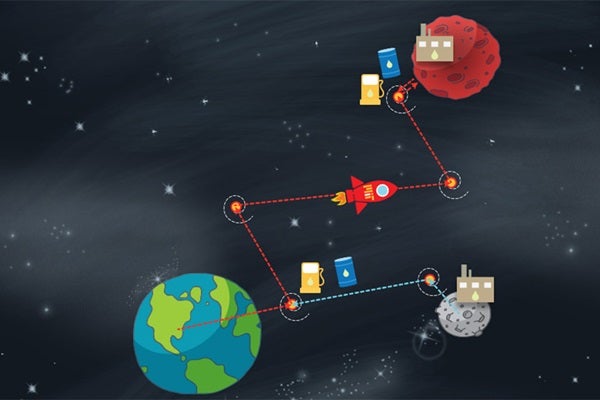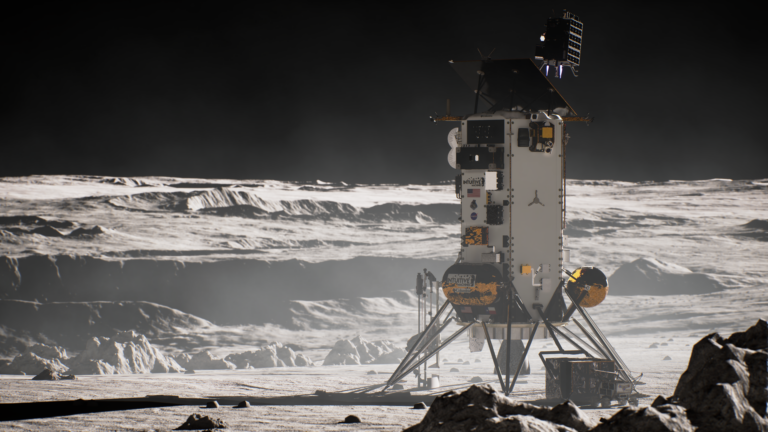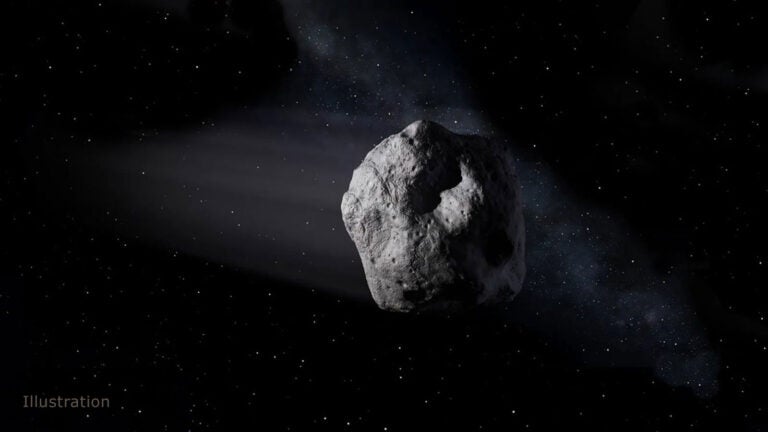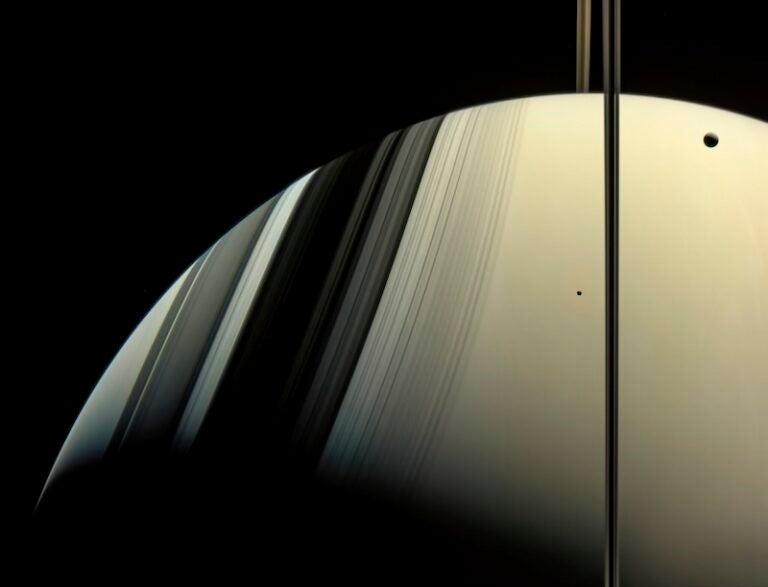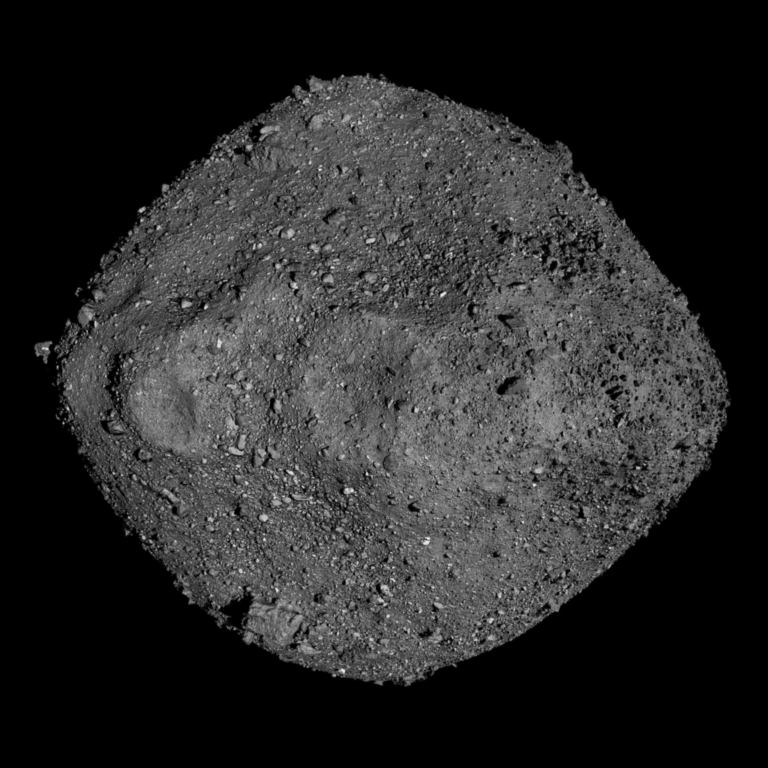Previous studies have suggested that lunar soil and water ice in certain craters of the Moon may be mined and converted to fuel. Assuming that such technologies are established at the time of a mission to Mars, the MIT group has found that taking a detour to the Moon to refuel would reduce the mass of a mission upon launch by 68 percent.
The group developed a model to determine the best route to Mars, assuming the availability of resources and fuel-generating infrastructure on the Moon. Based on their calculations, they determined the optimal route to Mars, in order to minimize the mass that would have to be launched from Earth — often a major cost driver in space exploration missions.
They found the most mass-efficient path involves launching a crew from Earth with just enough fuel to get into orbit around Earth. A fuel-producing plant on the surface of the Moon would then launch tankers of fuel into space, where they would enter gravitational orbit. The tankers would eventually be picked up by the Mars-bound crew, which would then head to a nearby fueling station to gas up before ultimately heading to Mars.
Olivier de Weck from MIT said the plan deviates from NASA’s more direct “carry-along” route.
“This is completely against the established common wisdom of how to go to Mars, which is a straight shot to Mars, carry everything with you,” de Weck said. “The idea of taking a detour into the lunar system … it’s very unintuitive. But from an optimal network and big-picture view, this could be very affordable in the long term because you don’t have to ship everything from Earth.”
A faraway strategy
In the past, space exploration programs have adopted two main strategies in supplying mission crews with resources: a carry-along approach, where all vehicles and resources travel with the crew at all times — as on the Apollo missions to the Moon — and a “resupply strategy,” in which resources are replenished regularly, such as by spaceflights to the International Space Station.
However, as humans explore beyond Earth’s orbit, such strategies may not be sustainable, as de Weck and Takuto Ishimatsu from MIT wrote: “As budgets are constrained and destinations are far away from home, a well-planned logistics strategy becomes imperative.”
The team proposes that missions to Mars and other distant destinations may benefit from a supply strategy that hinges on “in-situ resource utilization” — the idea that resources such as fuel, and provisions such as water and oxygen, may be produced and collected along the route of space exploration. Materials produced in space would replace those that would otherwise be transported from Earth.
For example, water ice, which could potentially be mined and processed into rocket fuel, has been found on both Mars and the Moon.
“There’s a pretty high degree of confidence that these resources are available,” de Weck said. “Assuming you can extract these resources, what do you do with it? Almost nobody has looked at that question.”
Building a network in space
To see whether fuel resources and infrastructure in space would benefit manned missions to Mars, Ishimatsu developed a network flow model to explore various routes to Mars, ranging from a direct carry-along flight to a series of refueling pit stops along the way. The objective of the model was to minimize the mass that would be launched from Earth, even when including the mass of a fuel-producing plant, and spares that would need to be pre-deployed.
The approach models the movement of cargo and commodities, such as fuel, in a supply chain network in space. Ishimatsu developed a new mathematical model that improves on a conventional model for routing vehicles. He adapted the model for the more complex scenario of long-term missions in space, taking into account constraints specific to space travel.
The model assumes a future scenario in which fuel can be processed on, and transported from, the Moon to rendezvous points in space. Likewise, the model assumes that fuel depots can be located at certain gravitationally bound locations in space, called Lagrange points. Given a mission objective, such as a set of weight restrictions, the model identifies the best route in the supply network, while also satisfying the constraints of basic physics.
Ishimatsu said the research demonstrates the importance of establishing a resource-producing infrastructure in space. He emphasized that such infrastructure may not be necessary for a first trip to Mars. But a resource network in space would enable humans to make the journey repeatedly in a sustainable way.
“Our ultimate goal is to colonize Mars and to establish a permanent, self-sustainable human presence there,” Ishimatsu said. “However, equally important, I believe that we need to ‘pave a road’ in space so that we can travel between planetary bodies in an affordable way.”
“The optimization suggests that the Moon could play a major role in getting us to Mars repeatedly and sustainably,” de Weck said. “People have hinted at that before, but we think this is the first definitive paper that shows mathematically why that’s the right answer.”

